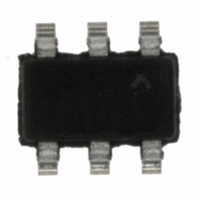LT1790BCS6-4.096#TRM Linear Technology, LT1790BCS6-4.096#TRM Datasheet - Page 20

LT1790BCS6-4.096#TRM
Manufacturer Part Number
LT1790BCS6-4.096#TRM
Description
IC REF LDO MPWR 4.096V SOT23-6
Manufacturer
Linear Technology
Datasheet
1.LT1790BCS6-2.048TRMPBF.pdf
(26 pages)
Specifications of LT1790BCS6-4.096#TRM
Reference Type
Series
Voltage - Output
4.096V
Tolerance
±0.1%
Temperature Coefficient
25ppm/°C
Voltage - Input
4.6 ~ 18 V
Number Of Channels
1
Current - Quiescent
60µA
Current - Output
5mA
Operating Temperature
0°C ~ 70°C
Mounting Type
Surface Mount
Package / Case
SOT-23-6
Lead Free Status / RoHS Status
Contains lead / RoHS non-compliant
Current - Cathode
-
Other names
LT1790BCS6-4.096#TRMTR
Available stocks
Company
Part Number
Manufacturer
Quantity
Price
LT1790
APPLICATIONS INFORMATION
Positive or Negative Operation
Series operation is ideal for extending battery life. If an
LT1790 is operated in series mode it does not require an
external current setting resistor. The specifi cations guar-
antee that the LT1790 family operates to 18V. When the
circuitry being regulated does not demand current, the
series connected LT1790 consumes only a few hundred
μW, yet the same connection can sink or source 5mA of
load current when demanded. A typical series connection
is shown on the front page of this data sheet.
The circuit in Figure 7 shows the connection for a – 2.5V
reference, although any LT1790 voltage option can be
confi gured this way to make a negative reference. The
LT1790 can be used as very stable negative references,
however, they require a positive voltage applied to Pin 4
to bias internal circuitry. This voltage must be current
limited with R1 to keep the output PNP transistor from
20
V
GEN
8V
6V
4V
2V
0V
Figure 6. LT1790-2.5 Sinking – 4mA to –5mA
1790 F06
V
(AC COUPLED)
OUT
turning on and driving the grounded output. C1 provides
stability during load transients. This connection maintains
nearly the same accuracy and temperature coeffi cient of
the positive connected LT1790.
Long-Term Drift
Long-term drift cannot be extrapolated from accelerated
high temperature testing. This erroneous technique gives
drift numbers that are widely optimistic. The only way
long-term drift can be determined is to measure it over
the time interval of interest. The LT1790S6 drift data was
taken on over 100 parts that were soldered into PC boards
similar to a real world application. The boards were then
placed into a constant temperature oven with T
their outputs scanned regularly and measured with an 8.5
digit DVM. Long-term drift curves are shown in the Typical
Performance Characteristics section.
Figure 7. Using the LT1790-2.5 to Build a –2.5V Reference
R
L
=
V
6
EE
125μA
– V
LT1790-2.5
OUT
V
EE
1, 2
4
10k
C1
0.1μF
R1
C
1μF
1790 F07
L
V
OUT
3V
= –2.5V
A
= 30°C,
1790fb
















